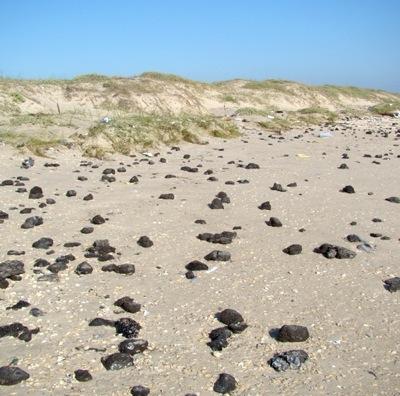When word came earlier this month that tar balls had washed ashore at Dry Tortugas National Park, the implication was that they were related to the Deepwater Horizon catastrophe.
But then a U.S. Coast Guard analysis showed they weren't related. So where did they come from?
“What we’ve heard is this might be a 'spill of opportunity,'" said Dave Hallac, the supervisory biologist for both Everglades and Dry Tortugas national parks. "And what that means is that because there’s so much oil in the Gulf due to the Deepwater Horizon spill that some large ships may be taking the opportunity to just, under the cover of that oil, dump oil that they needed to get rid of, or wanted to get rid of, or to clean out their bilges, which may have some petroleum products in the bilge.
"So, 'I don’t know' is the answer," he said in reference to the question of where the tar balls came from. "But the Coast Guard has notified us that these spills of opportunity are not all that uncommon when there’s a larger spill in an area.”
If it was indeed an opportunistic, and illegal, dumping of oil into the waters surrounding Dry Tortugas, it was a sizable one judging from the number of tar balls that were cleaned up at the park's Loggerhead and Garden keys.
"I’m sure it’s possible that from time to time tar balls do wash up on the beaches of Dry Tortugas. We’ve never had a situation, however, that we can remember in the last decade where we’ve had this level of tar balls showing up," said the biologist. "I have heard anecdotally from other people that many decades ago there were often tar balls washing up, but in the more recent history out there it is not a common event to have a fair number of tar balls washing up on the beach.”
When the tar balls were first reported this month, park crews initially found about 40 on the shores of Loggerhead Key.
"It was several days before we were able to mount a cleanup effort and get the tar balls tested. When we actually went out and did the cleanup, we cleaned up approximately 50," said Mr. Hallac. "But there’s some chance that some of the tar balls that showed up initially got washed away during the next high tide. Some of them may have been covered up by sand and dead seagrass and sargasso weed on the beach. We certainly collected approximately 50 during the cleanup, but it’s possible that more throughout the process have actually arrived.”




Add comment